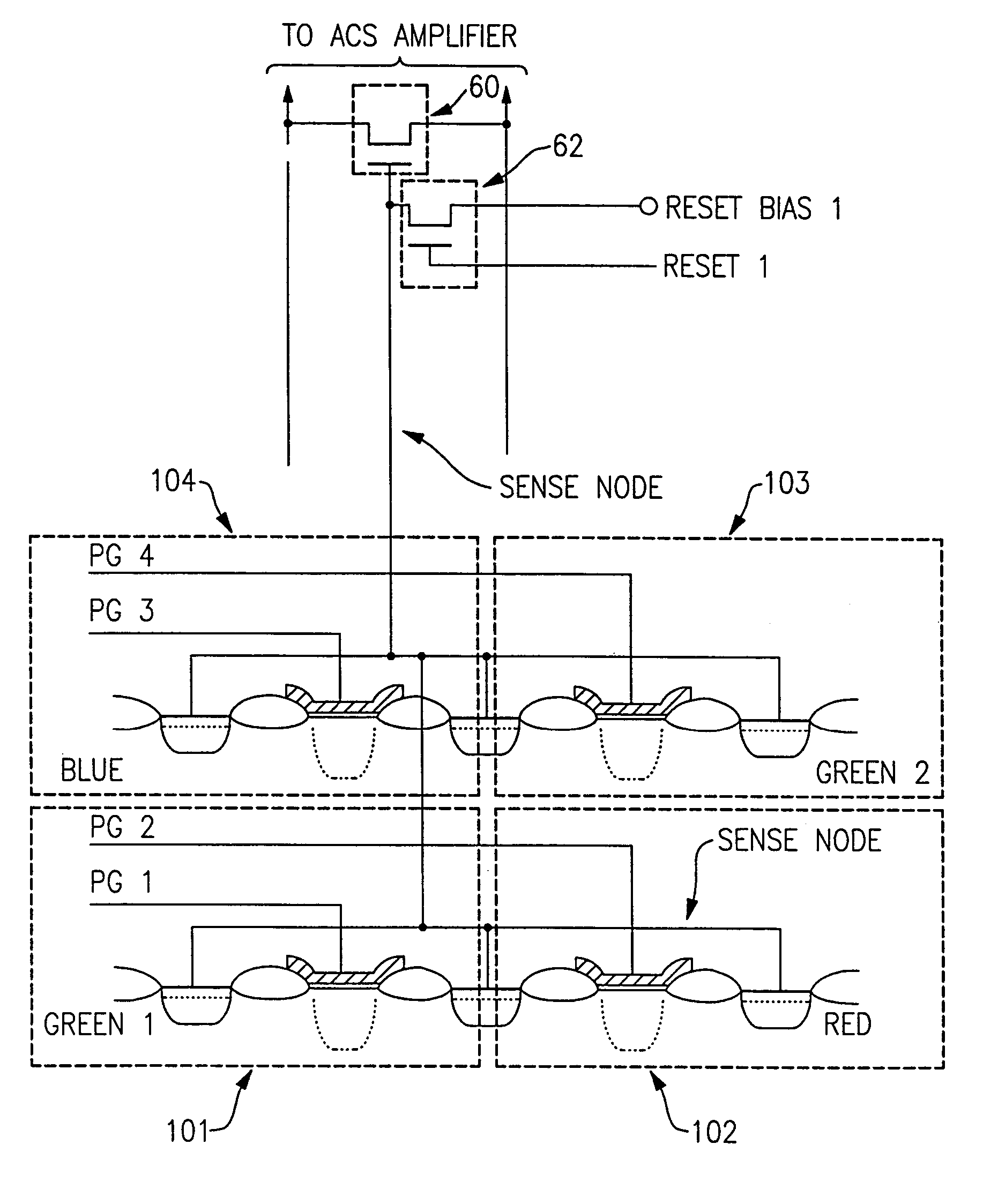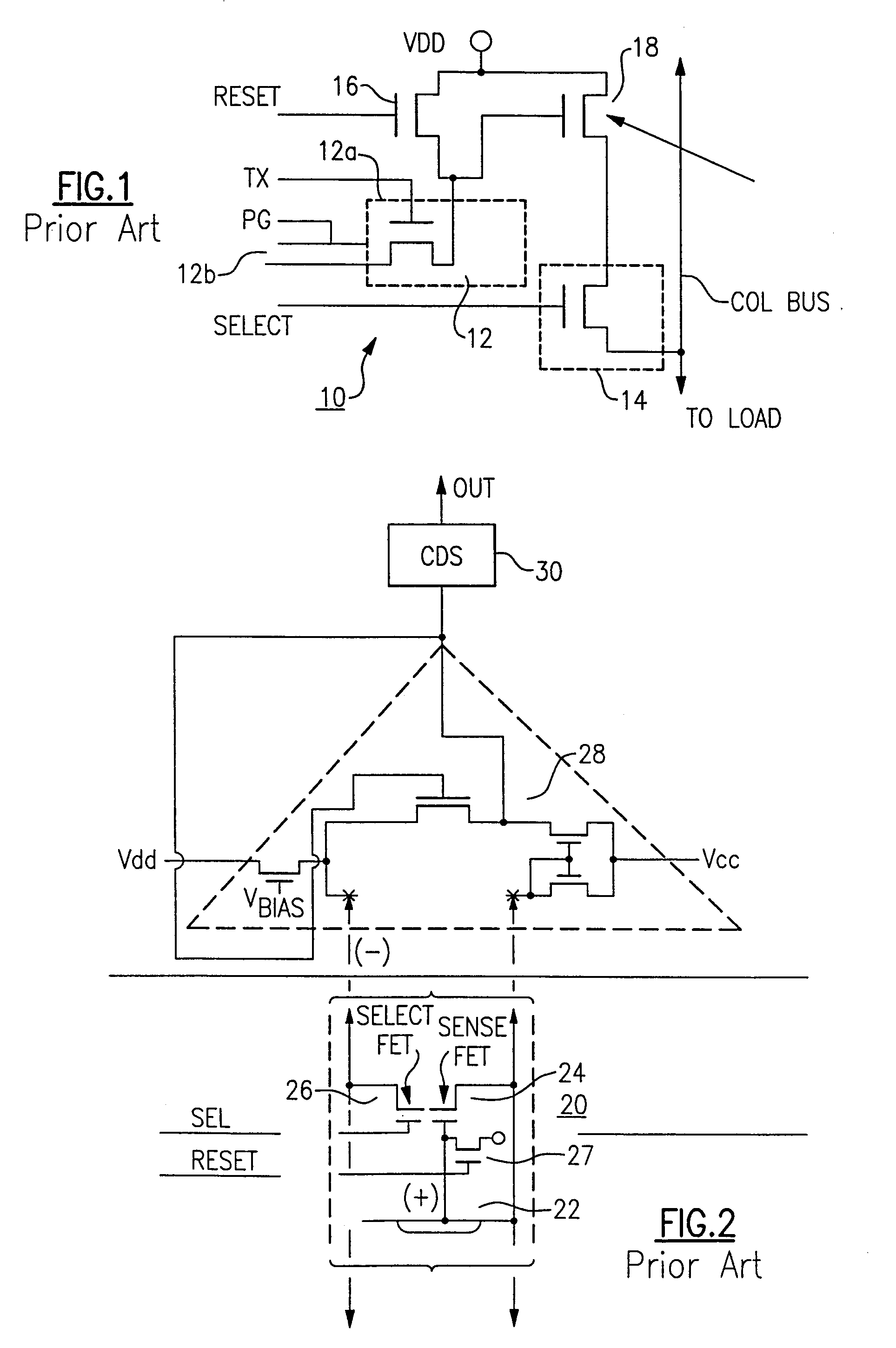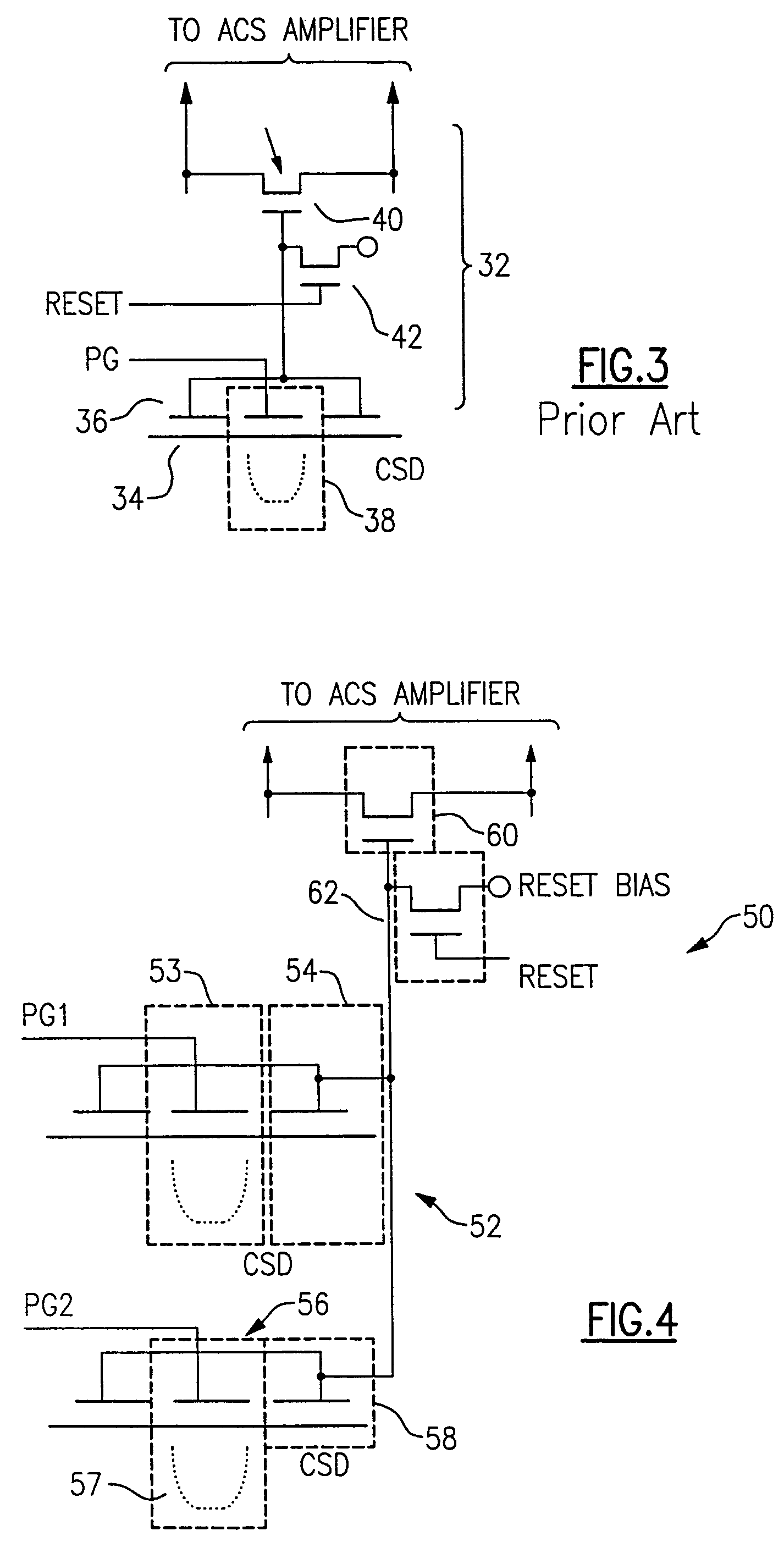Solid state imager with reduced number of transistors per pixel
a technology of transistors and imagers, applied in the field of solid-state imagers, can solve the problems of information destruction, high noise threshold, inherent high noise threshold, etc., and achieve the effects of reducing manufacturing scrap rate, increasing sensitivity in low-light level environments, and increasing manufacturing yield
- Summary
- Abstract
- Description
- Claims
- Application Information
AI Technical Summary
Benefits of technology
Problems solved by technology
Method used
Image
Examples
Embodiment Construction
[0033]With reference now to the Drawing, and initially to FIG. 1 thereof, a CMOS imager 10, of the type that is known as an Active Pixel Sensor or APS, is shown here with a rather large number of components, including a photogate 12 which is the light sensitive member, with a transfer FET 12a, a row select transistor 14, a reset transistor 16, a sense FET 18, and various metallized leads including the row select lead SELECT, photogate lead PG, transfer lead TX, reset lead RESET, input drain voltage VDD, and output column bus COL BUS, which is connected to an output load. The APS imagers tend to have at least three and often many more FETs for each pixel, with pixel complexity increasing in many designs due to the addition of other pixel functions such as shuttering capabilities for exposure control. Even with only three FETs per pixel, a 1.3 megapixel imager will have 3.9 million transistors in the pixel array alone. The three transistors are a lower limit of complexity in the APS s...
PUM
 Login to View More
Login to View More Abstract
Description
Claims
Application Information
 Login to View More
Login to View More - R&D
- Intellectual Property
- Life Sciences
- Materials
- Tech Scout
- Unparalleled Data Quality
- Higher Quality Content
- 60% Fewer Hallucinations
Browse by: Latest US Patents, China's latest patents, Technical Efficacy Thesaurus, Application Domain, Technology Topic, Popular Technical Reports.
© 2025 PatSnap. All rights reserved.Legal|Privacy policy|Modern Slavery Act Transparency Statement|Sitemap|About US| Contact US: help@patsnap.com



